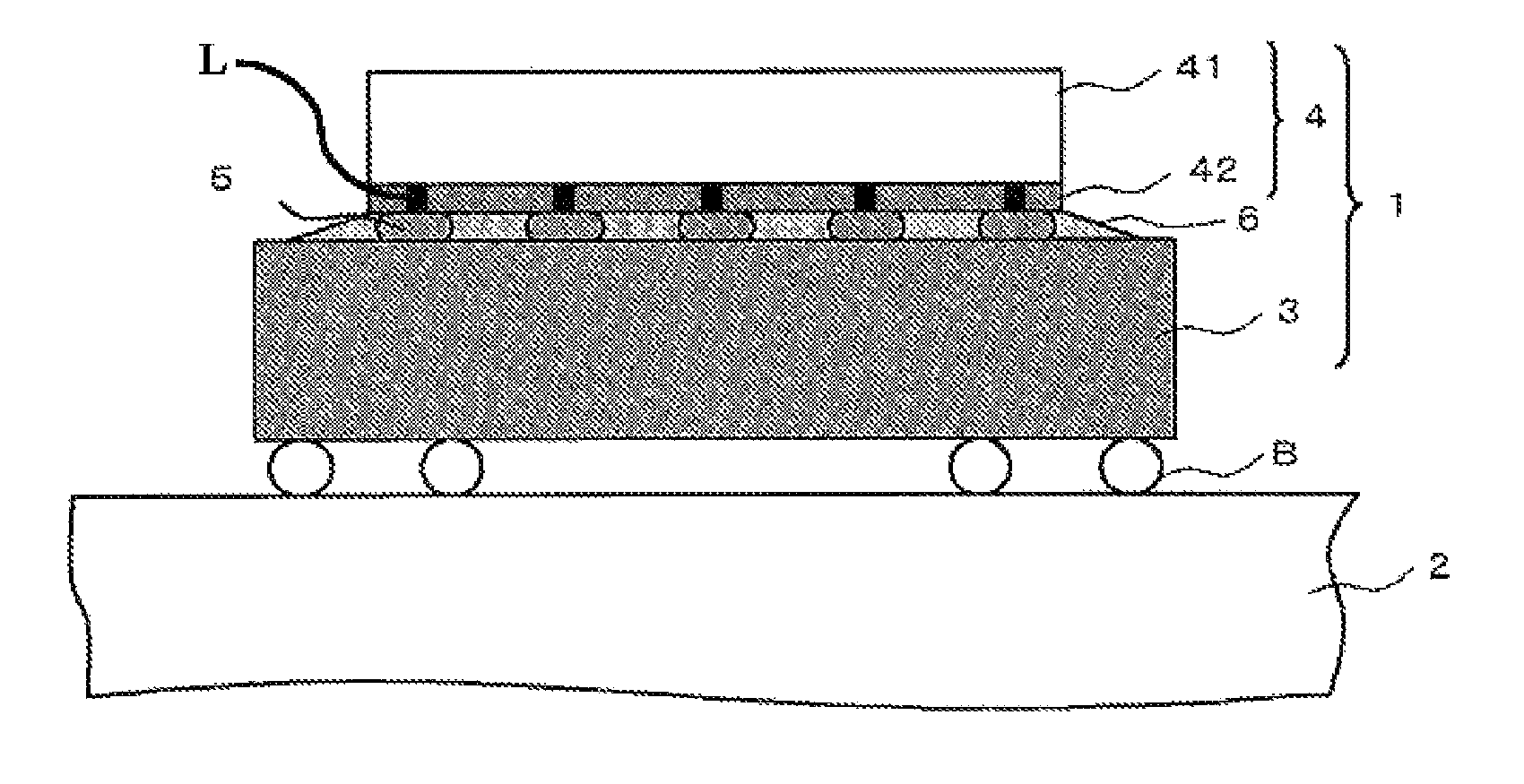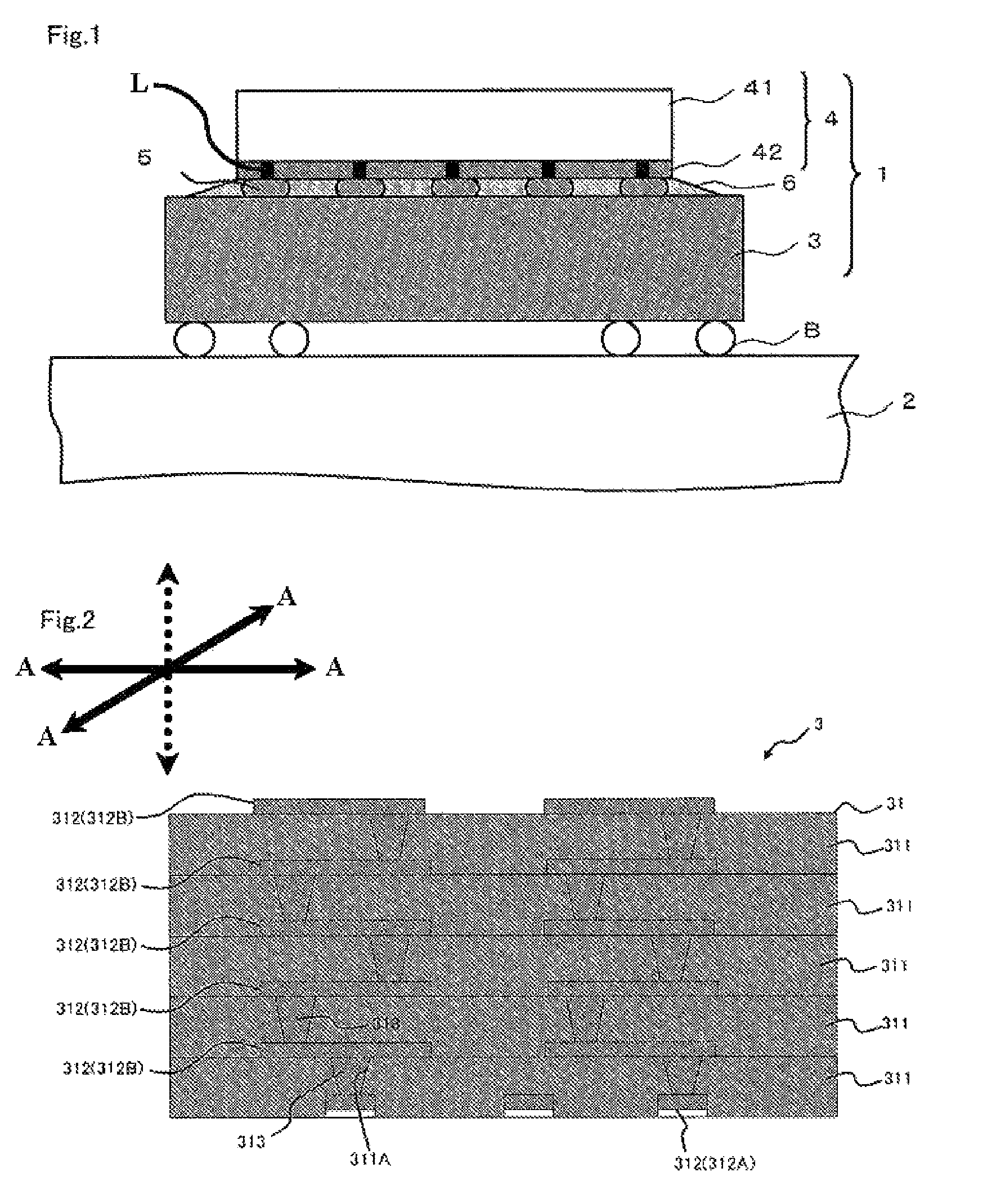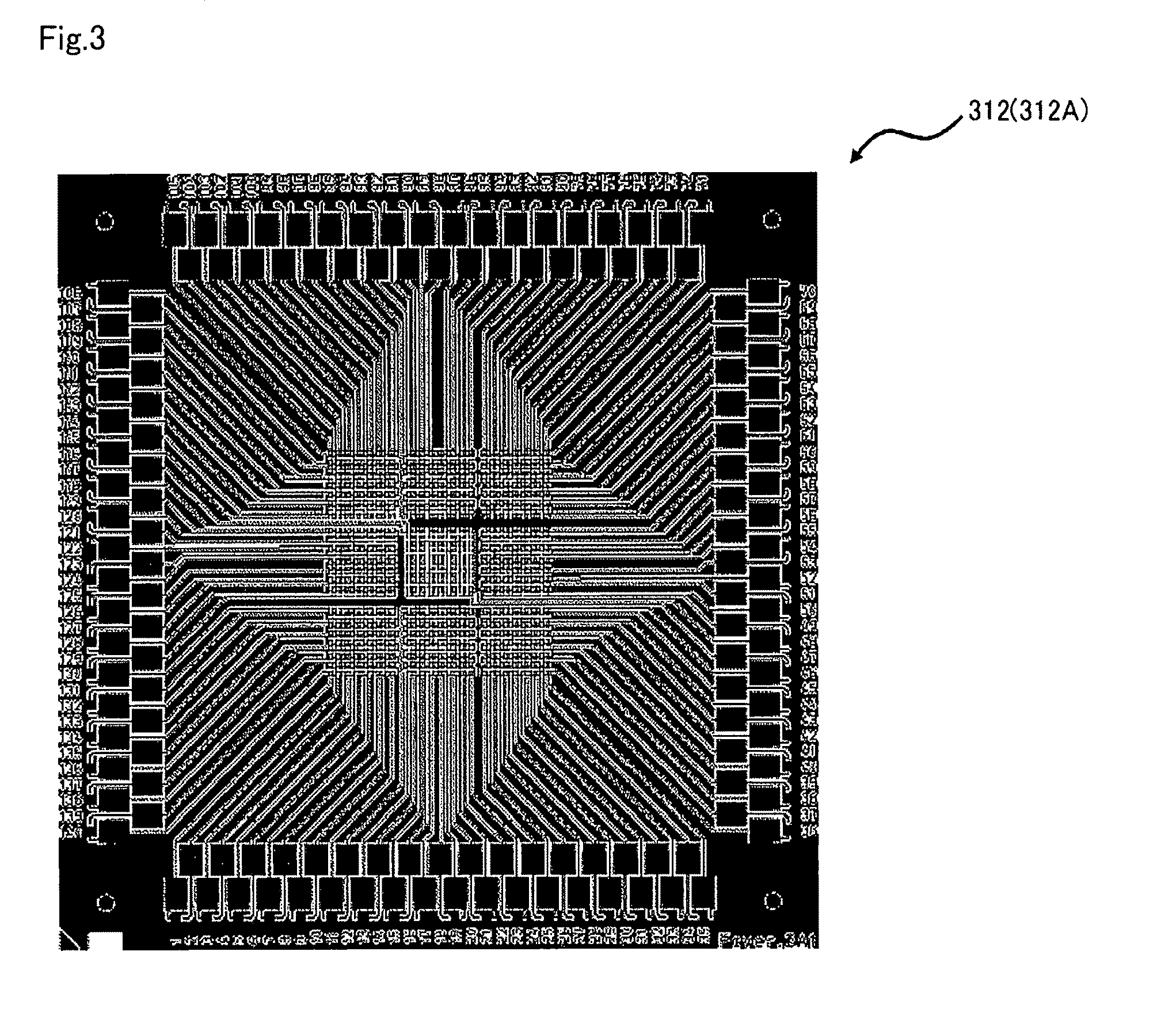Semiconductor device
a technology of semiconductor chips and semiconductors, applied in the direction of solid-state devices, basic electric elements, metal-patterned materials, etc., can solve problems such as cracks in semiconductor chips, and achieve the effect of preventing damage and reducing the linear expansion coefficient in the thickness direction of the substra
- Summary
- Abstract
- Description
- Claims
- Application Information
AI Technical Summary
Benefits of technology
Problems solved by technology
Method used
Image
Examples
example 1-1
[0159]Preparation of Resin Composition: Bisphenol F Epoxy Resin with an epoxy equivalent of 165 (11 parts by weight), N-[2-methyl-4-(oxiranylmethoxy)phenyl]-N-(oxiranylmethyl)oxiranemethanamine (ELM-100 made by Sumitomo Chemical) (11 parts by weight), 4,4′-methylenbis-(2-ethylanilin) (Kayahard AA made by Nippon Kayaku Co. Ltd.) (10 parts by weight), γ-glycidylpropyltriethoxysilane (KBE403 made by Shin-Etsu Chemical Co., Ltd.) (1 part by weight), spherical fused silica with an average particle diameter of 0.5 μm (SO-25R made by Admatechs Corporation Limited) (65 parts by weight) were weighed, kneaded through a three-roll mill, and the blend was defoamed under vacuum to prepare a liquid resin composition.
example 1-2
[0160]A resin composition was prepared as in Example 1-1 except that the formulation of the resin composition was changed as follows:
[0161]Bisphenol F epoxy resin with an epoxy equivalent of 165 (18 parts by weight), N-[2-methyl-4-(oxiranylmethoxy) phenyl]-N-(oxiranylmethyl)oxiranemethanamine (ELM-100 made by Sumitomo Chemical) (6 parts by weight), and 4,4′-methylenbis-(2-ethylanilin) (Kayahard AA made by Nippon Kayaku Co. Ltd.) (10 parts by weight) were used.
example 1-3
[0162]A resin composition was prepared as in Example 1-1 except that the formulation of the resin composition was changed as follows:
[0163]Bisphenol F epoxy resin with an epoxy equivalent of 165 (25 parts by weight) and 4,4′-methylenbis-(2-ethylanilin) (Kayahard AA made by Nippon Kayaku Co. Ltd.) (8 parts by weight) were used. N-[2-methyl-4-(oxiranylmethoxy)phenyl]-N-(oxiranylmethyl) oxiranemethanamine (ELM-100 made by Sumitomo Chemical) was not used.
PUM
 Login to View More
Login to View More Abstract
Description
Claims
Application Information
 Login to View More
Login to View More - R&D
- Intellectual Property
- Life Sciences
- Materials
- Tech Scout
- Unparalleled Data Quality
- Higher Quality Content
- 60% Fewer Hallucinations
Browse by: Latest US Patents, China's latest patents, Technical Efficacy Thesaurus, Application Domain, Technology Topic, Popular Technical Reports.
© 2025 PatSnap. All rights reserved.Legal|Privacy policy|Modern Slavery Act Transparency Statement|Sitemap|About US| Contact US: help@patsnap.com



